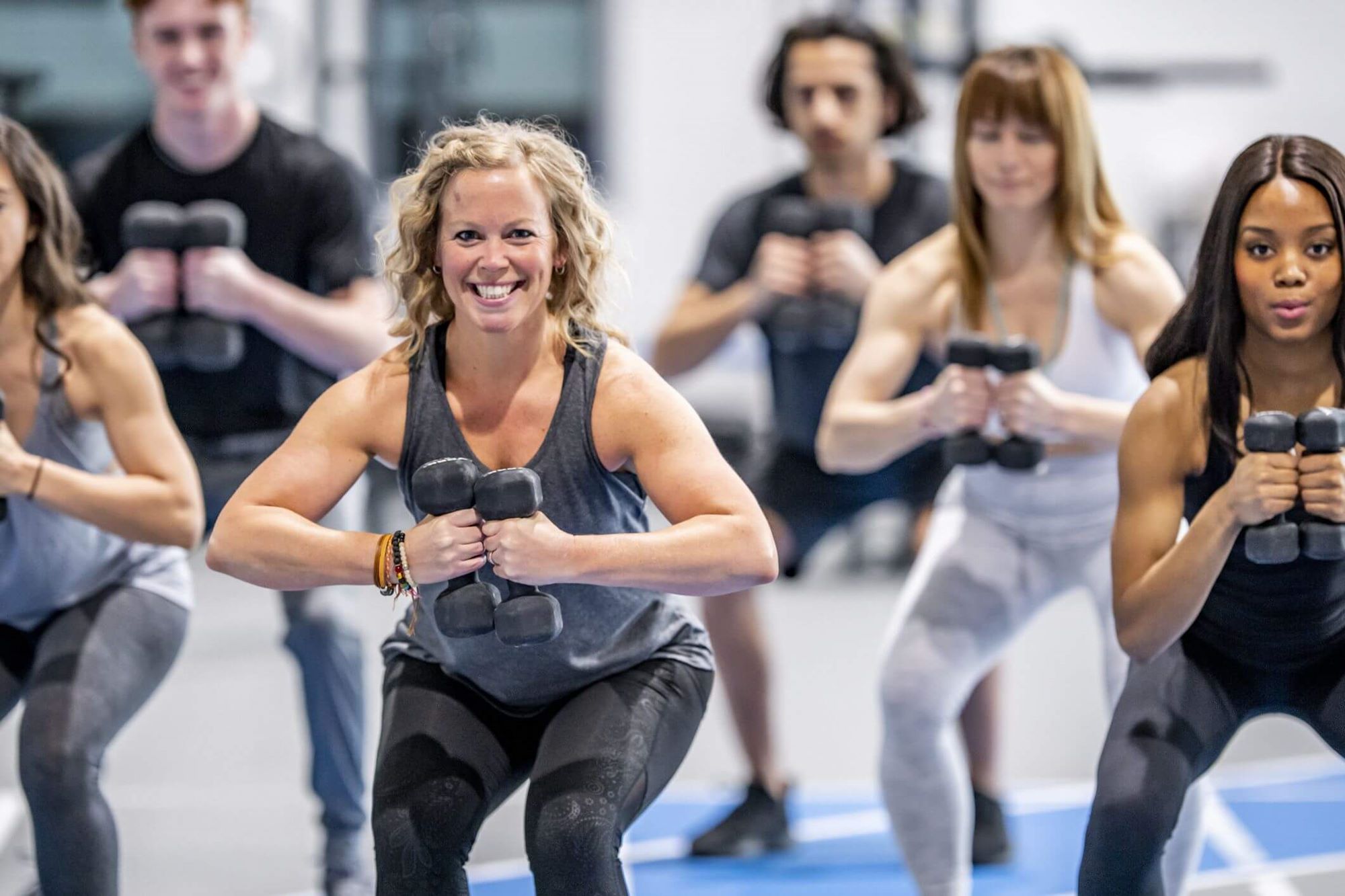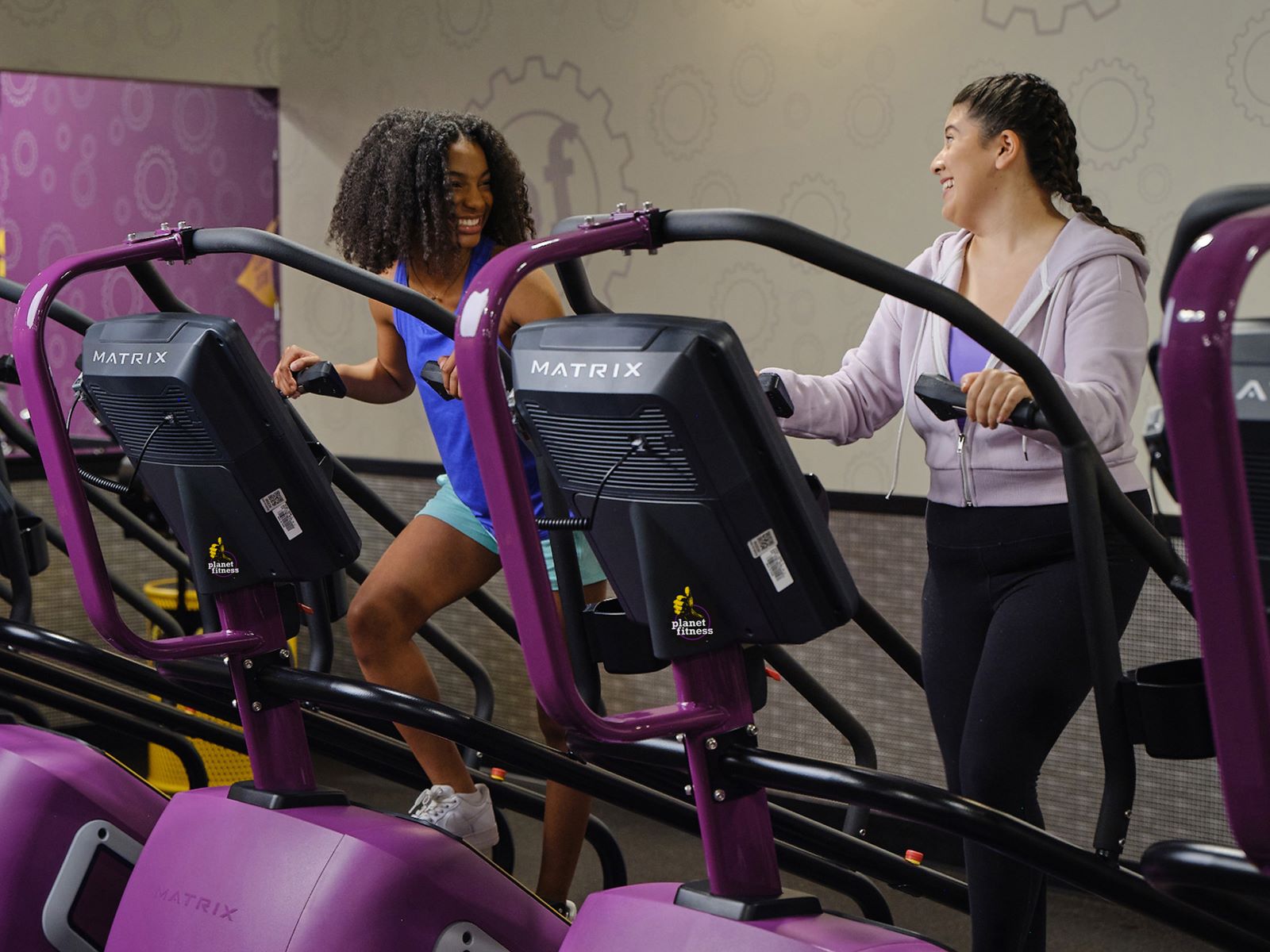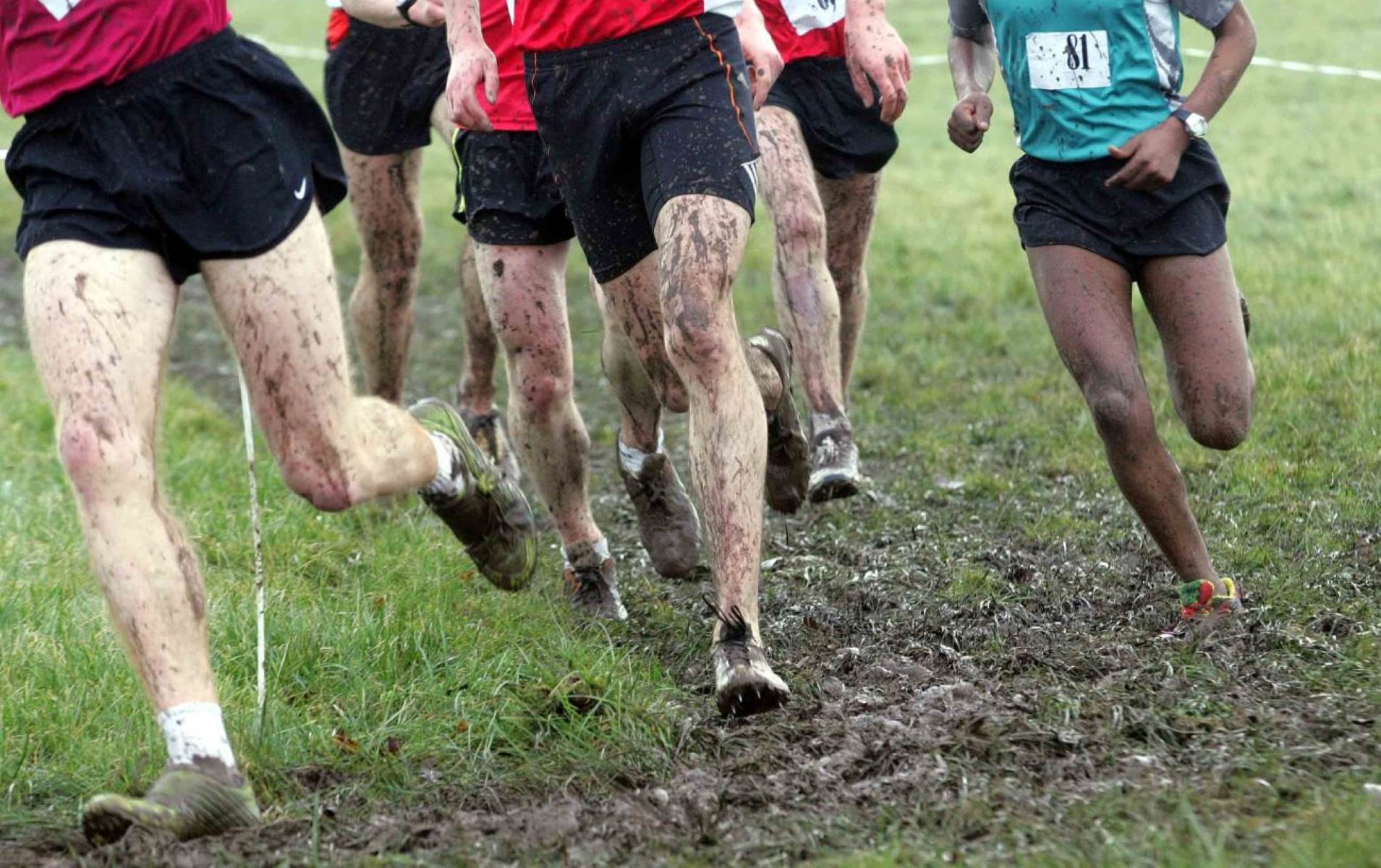

Featured
How To Teach Proper Running Form
Published: October 15, 2023
Learn how to teach proper running form with our featured guide. Improve your technique and prevent injuries with expert advice and tips.
Introduction
When it comes to running, it’s not just about putting one foot in front of the other. Proper running form plays a crucial role in maximizing efficiency, preventing injuries, and improving performance. Whether you’re an experienced runner or just starting out, learning and teaching proper running form is essential for long-term success.
Having the right running form can help you optimize your running economy, which means using less energy while running at a given pace. It can also help reduce the risk of common running injuries such as shin splints, ITB syndrome, and plantar fasciitis. Plus, with proper form, you’ll be able to generate more power, speed, and endurance, ultimately enhancing your overall performance.
Before delving into the specifics of proper running form, it is important to recognize that everyone’s body is unique and there may be slight variations in form from person to person. However, there are fundamental principles that apply to most people and practicing these principles can significantly improve your running experience.
In this article, we will explore the importance of proper running form, identify common running form mistakes, understand the mechanics of running, provide tips on teaching proper form, and suggest drills and exercises to improve running form. Additionally, we will discuss the role of footwear in promoting proper form and address individual form issues that runners may face. Finally, we will explore how to incorporate running form into training sessions effectively.
So, whether you are a coach looking to improve your athletes’ performance, or a runner aiming to enhance your own form, this comprehensive guide will equip you with the knowledge and tools necessary to teach and practice proper running form.
Importance of Proper Running Form
Proper running form is essential for several reasons. First and foremost, it helps to prevent injuries. When you run with improper form, you place excessive stress on certain muscles and joints, which can lead to overuse injuries such as shin splints, stress fractures, and tendinitis. By maintaining proper alignment and posture, you distribute the impact of each stride evenly throughout your body, reducing the risk of these painful injuries.
Furthermore, running with proper form optimizes your running economy. Good form allows you to use your energy efficiently, minimizing wasted effort and maximizing your performance. When you have incorrect form, you may be wasting energy by engaging muscles that are not necessary for running, leading to fatigue and decreased performance.
In addition to injury prevention and improved performance, proper running form can also enhance your overall running experience. It helps you maintain a consistent rhythm and stride, allowing you to run more smoothly and effortlessly. This can lead to a greater sense of enjoyment and fulfillment during your runs.
Moreover, proper running form can have a positive impact on your posture and alignment even when you’re not running. Regularly practicing good form can help strengthen the muscles that support your spine and improve your overall posture, which can enhance your daily activities and reduce the risk of musculoskeletal issues.
Lastly, having proper form can also serve as a visual cue to others. When you run with proper technique, you exude confidence, athleticism, and efficiency. This can be inspiring and motivating to others, whether they are fellow runners, spectators, or even non-runners who may be considering taking up the sport themselves.
Overall, the importance of proper running form cannot be emphasized enough. It is the foundation of injury prevention, efficient running, and an enjoyable running experience. By focusing on your form, you can make significant strides in your running journey and unlock your full potential as a runner.
Common Running Form Mistakes
Even the most experienced runners can fall into bad habits and make common running form mistakes. Recognizing and addressing these mistakes is crucial for improving your running efficiency and reducing the risk of injuries. Let’s take a look at some of the most common running form errors:
- Overstriding: This occurs when your foot lands too far in front of your body, resulting in a braking effect and inefficient energy transfer. Overstriding puts excessive stress on your joints and can lead to injuries such as shin splints and knee pain.
- Slouching posture: Running with a hunched or slouched posture can lead to inefficient breathing, limited chest expansion, and increased tension in your upper body. It can also affect your stride and disrupt your overall running mechanics.
- Heel-striking: Landing heavily on your heels with each stride is a common mistake that can increase the impact on your joints and lead to injuries. It also causes your foot to act as a braking mechanism, slowing you down and wasting energy.
- Excessive arm movement: Flailing or crossing your arms in front of your body can waste energy and disrupt your running rhythm. Your arms should be relaxed, with elbows bent at around 90 degrees, and should move in a forward-backward motion, helping to propel you forward.
- Collapsed or inward-leaning posture: Running with a collapsed or inward-leaning posture can strain your back, hips, and knees. It also reduces your lung capacity and can cause breathing difficulties.
- Lack of core engagement: Neglecting to engage your core muscles can lead to instability and decrease your overall running efficiency. A strong core helps maintain proper alignment and allows for efficient transfer of energy from your upper body to your lower body.
- Too high or too low cadence: Cadence refers to the number of steps you take per minute. Running with a cadence that is too slow can lead to overstriding and increased impact, while running with a cadence that is too fast can result in shorter strides and decreased efficiency.
By being aware of these common running form mistakes and making necessary adjustments, you can significantly improve your running technique and maximize your performance potential.
Understanding Proper Running Mechanics
Proper running mechanics involve a series of coordinated movements and biomechanical principles that optimize efficiency and reduce the risk of injury. By understanding the key components of running mechanics, you can make necessary adjustments to your form and enhance your overall running experience. Let’s delve into the essential elements of proper running mechanics:
- Neutral alignment: Start by ensuring your body is aligned in a neutral position. This means standing tall with a slight forward lean from the ankles. Avoid excessive leaning forward or backward, as it can throw off your balance and affect your stride.
- Footstrike: Aim for a midfoot or forefoot strike when your foot first makes contact with the ground. This allows for a more efficient transfer of energy and reduces the impact on your joints. Avoid landing heavily on your heels, as it can lead to overstriding and increased risk of injury.
- Cadence: Cadence refers to the number of steps you take per minute. Optimal cadence varies for individuals, but generally, a cadence of around 180 steps per minute is considered efficient. Increasing your cadence can help reduce overstriding and improve running economy.
- Leg swing: Your leg should swing from the hip in a smooth and controlled manner. Avoid excessive leg swing or cross-over, as it can waste energy and disrupt your stride. Focus on driving your knees forward rather than upward or outward.
- Arm swing: Your arms play a vital role in maintaining balance and propelling you forward. Keep your arms relaxed, elbows bent at about 90 degrees, and swing them in a front-to-back motion. Avoid excessive side-to-side or across-the-body movement.
- Posture: Maintain an upright posture with your head aligned over your shoulders and your gaze directed forward. Avoid slouching or leaning too far forward, as it can affect your breathing and overall biomechanics.
- Core engagement: Engaging your core muscles helps stabilize your body and maintain proper alignment throughout your run. Focus on activating your deep abdominal muscles to support your spine and enhance running efficiency.
- Breathing: Breathe deeply and rhythmically, allowing for maximum oxygen intake. Coordinate your breathing with your stride pattern to establish a natural rhythm and avoid shallow breathing that can lead to fatigue.
Understanding and implementing proper running mechanics takes time and practice. Start by focusing on one aspect at a time, gradually incorporating adjustments into your running routine. Video analysis or working with a running coach can also provide valuable feedback and guidance in refining your mechanics.
By mastering the fundamentals of proper running mechanics, you can improve your efficiency, reduce the risk of injury, and experience a more enjoyable and successful running journey.
Tips for Teaching Proper Running Form
Teaching proper running form requires patience, knowledge, and effective coaching techniques. Whether you are an experienced running coach or a supportive teammate helping a friend, here are some tips to help you effectively teach proper running form:
- Lead by example: Demonstrating the correct form yourself is one of the most effective ways to teach proper running mechanics. Whether you’re running alongside your trainee or showing them proper form through visual aids or videos, being a role model will help them understand the desired technique.
- Break it down: Many elements contribute to proper running form, so it’s important to break them down into manageable steps. Start by focusing on one aspect at a time, such as footstrike, arm swing, or posture. Once your trainee feels comfortable with one component, move on to the next.
- Provide constructive feedback: Regularly provide feedback during training sessions to help your trainee make adjustments and improvements. Be specific in your feedback, focusing on what they are doing well and areas where they can make adjustments. Offering positive reinforcement can also motivate your trainee to continue refining their form.
- Use drills and exercises: Incorporate specific drills and exercises into your training sessions to reinforce proper running form. These drills can target specific aspects of technique, such as cadence, stride length, or arm swing. Incorporating these exercises regularly can help your trainee develop muscle memory and reinforce proper form.
- Video analysis: Utilize video analysis during training to provide visual feedback. Record your trainee’s running form from different angles and review the footage together. This visual feedback can help them better understand how their form aligns with the desired technique and identify areas for improvement.
- Focus on gradual improvement: Emphasize the importance of gradual improvement rather than perfection. Running form adjustments take time, so encourage your trainee to be patient and persistent. Celebrate small victories and acknowledge their progress along the way.
- Individualize the coaching approach: Recognize that each person has unique biomechanics and may require different coaching strategies. Tailor your approach to the individual, taking into account their strengths, weaknesses, and any specific form issues they may have.
- Encourage self-awareness and body listening: Teach your trainee to become more aware of their body and how it feels while running. Encourage them to listen to their body’s feedback, including any discomfort or tension, which may indicate areas where form adjustments are needed.
- Make it fun: Learning proper running form doesn’t have to be a dull and serious endeavor. Incorporate fun and engaging activities into your training sessions to keep your trainee motivated and excited about improving their form. This can include form-focused games, challenges, or group activities.
By implementing these tips, you can effectively teach proper running form and help your trainees develop efficient and injury-free running techniques.
Drills and Exercises to Improve Running Form
Incorporating specific drills and exercises into your training routine can greatly enhance your running form by targeting and reinforcing key aspects of technique. Here are some effective drills and exercises to improve your running form:
- High knees: This drill helps improve stride frequency and encourages proper knee drive. While running in place, focus on lifting your knees as high as possible, driving them upwards towards your chest. Maintain an upright posture and engage your core as you perform this exercise.
- Butt kicks: Butt kicks strengthen the hamstrings, promote faster leg turnover, and encourage proper footstrike. Run in place while focusing on kicking your heels up towards your glutes, aiming to touch your buttocks with each stride.
- A-skips: A-skips enhance coordination, hip flexor strength, and proper knee lift. Execute a skipping motion, but emphasize driving your knee upwards and leaning slightly forward with each stride. Alternate between legs and maintain good posture throughout the drill.
- Single-leg balance exercises: Improving balance and stability is crucial for proper running form. Incorporate single-leg balance exercises such as standing on one leg and gradually adding challenges like closing your eyes or performing gentle knee lifts. This will strengthen the muscles that stabilize your body while running.
- Wall drills: Wall drills involve leaning against a wall and mimicking the motion of running. Focus on proper posture, knee drive, and arm swing as you drive your knee up to waist level before releasing it back down. This drill helps optimize your running mechanics and reinforces proper form.
- Skipping: Skipping is a fun and effective drill that helps improve coordination, stride length, and power. Perform high skips, focusing on driving your knee upwards and pushing off forcefully with your opposite foot. Maintain a relaxed upper body and a smooth rhythm.
- Dead bug exercise: This exercise targets core strength and stability. Lie on your back with your arms extended toward the ceiling and your knees bent at a 90-degree angle. Slowly lower your opposite arm and leg simultaneously, maintaining a stable core. Alternate sides, focusing on controlled movements and engaging your abdominal muscles.
- Short interval sprints: Short bursts of sprinting can help reinforce good form and promote faster turnover. Incorporate short sprints of around 50-100 meters into your runs, focusing on maintaining proper posture, quick foot turnover, and a strong arm drive.
- Running downhill: Running downhill provides an opportunity to practice proper form and increase cadence. Focus on leaning slightly forward, increasing your turnover, and landing with a midfoot or forefoot strike. Be conscious of not overstriding and maintain control throughout the descent.
Incorporate these drills and exercises into your training routine on a regular basis to improve your running form. Start with a few drills per session and gradually increase the intensity and duration as you become more proficient. Consistency and proper execution are key to seeing improvements in your running mechanics.
The Role of Footwear in Promoting Proper Running Form
Choosing the right footwear is crucial in promoting proper running form and minimizing the risk of injury. The shoes you wear can greatly influence your running mechanics and overall performance. Here are key considerations regarding the role of footwear in promoting proper running form:
Support and Stability: Properly fitting shoes with adequate support and stability help maintain proper alignment and foot positioning while running. They provide stability to prevent excessive inward or outward rolling of the feet, reducing the risk of ankle, knee, and hip injuries. Look for shoes with reliable arch support and a firm midsole to promote a neutral foot position.
Cushioning and Impact Absorption: Shoes with adequate cushioning help absorb the impact forces generated during running, reducing the stress on your joints and muscles. Proper cushioning not only provides comfort but also plays a vital role in promoting a more efficient running form by allowing your foot to roll smoothly from heel to toe.
Flexibility: Shoes with appropriate flexibility allow for a natural range of motion, particularly in the forefoot and toe area. The flexibility of the shoe should align with your foot’s natural movement pattern, enabling a more efficient push-off and toe-off during each stride. Too much or too little flexibility can interfere with proper running mechanics.
Weight: The weight of your shoes can affect your running form and overall performance. Lighter shoes can contribute to quicker foot turnover and a more efficient running stride. However, it’s important to find a balance between weight and the level of cushioning and support you need. Choose shoes that are lightweight but still provide the necessary protection and comfort for your feet.
Proper Fit: Finding the right shoe size and width is essential for promoting proper running mechanics. Shoes that are too tight can restrict natural foot motion, leading to discomfort and potentially altering your running form. Alternatively, shoes that are too loose can lack the necessary support and stability. It’s advisable to get a proper fitting at a specialty running store to ensure you select the right shoe size and style for your foot shape and running needs.
Gait Analysis: Undergoing a gait analysis can provide valuable insights into your specific running mechanics and foot strike pattern. This assessment can help determine if you have any biomechanical issues that might require specific shoe features or modifications. A professional gait analysis can be conducted by a running shoe specialist or a podiatrist and can help guide you in selecting the appropriate footwear.
Remember, while selecting the proper footwear is important, it is not a substitute for practicing and developing proper running form through drills, exercises, and coaching techniques. The right shoes can complement your efforts in improving your running form and reducing the risk of injury, but it’s essential to focus on technique and body awareness as well.
Addressing Individual Running Form Issues
Each runner is unique, and it’s common for individuals to have specific running form issues that require attention and correction. By identifying and addressing these individual form issues, you can improve running efficiency, reduce the risk of injury, and optimize performance. Here are some common running form issues and strategies to address them:
- Overpronation: Overpronation occurs when the foot rolls excessively inward during the footstrike phase. This can lead to a host of issues, including knee pain and shin splints. In such cases, wearing stability or motion-control shoes can help control excessive inward movement.
- Underpronation/Supination: Underpronation, also known as supination, refers to insufficient inward rolling of the foot during running. This can result in poor shock absorption and increased stress on the lower leg and foot. Runners with supination should consider cushioned shoes or those with a flexible design to provide adequate shock absorption.
- Uneven stride: Some runners may exhibit an uneven stride length or timing, where one leg is taking longer strides than the other. This asymmetry can lead to imbalances and potential injuries. Addressing this issue involves working on drills and exercises that promote symmetry, such as single-leg balance exercises and focusing on equal stride length.
- Crossover gait: The crossover gait is characterized by excessive sideways movements of the legs during running, where the foot crosses the midline of the body. This can lead to reduced efficiency and increased impact forces. Drills that promote proper leg swing, such as A-skips and lateral leg swings, can help address this issue.
- Lack of arm swing: Insufficient or improper arm swing can disrupt the balance and coordination of your running form. Encourage the proper arm swing motion by practicing specific arm swing exercises, such as exaggerated arm swings during warm-up drills, to develop a smooth and efficient arm movement that complements your stride.
- Inefficient cadence: Some runners may have a cadence that is too slow, resulting in overstriding and increased impact forces. Others may have a cadence that is too fast, leading to shorter strides and reduced efficiency. Use a metronome or running app with a cadence feature to monitor and gradually adjust your cadence to a more optimal range for your running style.
- Poor posture: Improper posture, such as slouching or leaning too far forward, can negatively impact running efficiency and increase the risk of injuries. Focus on maintaining an upright posture, engage your core muscles to stabilize your body, and imagine a string pulling you upward from the crown of your head to promote proper alignment.
- Insufficient arm drive: Inadequate arm drive can result in a lack of forward propulsion and reduced efficiency. Incorporate exercises that specifically target arm strength and drive, such as arm sprints or resistance band arm exercises, to improve the power and range of motion in your arm swing.
When addressing individual running form issues, it’s essential to work gradually and be patient. Make one adjustment at a time and focus on developing muscle memory. Regularly assess your progress and seek feedback from a knowledgeable coach or use video analysis to track your improvements. Remember, it takes time to modify running form, but with dedication and consistent practice, you can address these issues and enhance your running experience.
Incorporating Running Form into Training Sessions
Improving your running form requires consistent practice and integration into your training sessions. By incorporating specific strategies and exercises targeting form improvement, you can make significant progress towards optimizing your technique. Here are some effective ways to integrate running form into your training sessions:
- Warm-up drills: Start each training session with a series of warm-up drills that focus on form and technique. Include exercises such as high knees, butt kicks, A-skips, and lateral leg swings to promote proper alignment, improve stride mechanics, and activate the relevant muscles.
- Interval training: Use interval training sessions to work on specific aspects of running form. Incorporate shorter, higher intensity intervals to emphasize proper form and technique. This could include focusing on maintaining a neutral footstrike, engaging the core, or driving the arms efficiently during faster sprints.
- Form-focused runs: Dedicate certain runs solely to focus on your running form. Slow down the pace and concentrate on maintaining proper posture, footstrike, and arm swing throughout the entire run. Use this time to become more aware of your body and make adjustments as needed.
- Video analysis: Record yourself running at various speeds and distances during training sessions. Review the footage afterward, looking for any form issues or potential areas of improvement. Analyzing your running form through video analysis can provide valuable insights and help you identify specific areas to work on.
- Hill training: Incorporate hill workouts into your training routine to strengthen key muscles while promoting proper running form. Running uphill challenges your body to maintain proper alignment and engage the muscles needed for an efficient stride. Focus on your form while tackling hills, including maintaining a forward lean and driving your knees upward.
- Strength training: Include regular strength training exercises that target the muscles involved in running form and mechanics. Exercises such as squats, lunges, hip bridges, and core workouts help develop strength, stability, and mobility. Strong muscles provide better support for proper running form and reduce the risk of compensatory movements.
- Form cues and reminders: Use verbal or mental cues during training sessions to remind yourself of proper running form. Phrases like “relax the shoulders,” “quick turnover,” or “drive the arms” can serve as helpful reminders to maintain proper technique. Gradually incorporate these cues into your running practice until they become second nature.
- Coaching and feedback: Seek the guidance of a running coach or experienced runner who can provide feedback and suggestions to address specific form issues. Their expertise and outside perspective can help identify areas for improvement and offer personalized advice and drills tailored to your individual needs.
Remember, consistency and repetition are key when incorporating running form into your training sessions. While it may feel unnatural at first, over time, proper form will become more automatic and natural. Regularly assess your progress, be patient with yourself, and celebrate small victories along the way. By integrating form-focused training into your routine, you can enhance efficiency, reduce the risk of injury, and unlock your true running potential.
Conclusion
Proper running form is essential for maximizing performance, reducing the risk of injuries, and enhancing the overall running experience. By focusing on key aspects of running form such as footstrike, posture, cadence, and arm swing, you can improve your running efficiency and unlock your true potential as a runner.
Addressing common running form mistakes, understanding proper running mechanics, and incorporating specific drills and exercises into your training sessions are all important steps in developing and maintaining proper form. Teaching others about proper running form requires patience, leading by example, and individualizing the coaching approach to address specific form issues.
Furthermore, the role of footwear in promoting proper running form should not be overlooked. Choosing shoes that provide support, cushioning, and a proper fit can greatly assist in optimizing running mechanics and reducing the risk of injuries.
By addressing individual running form issues and incorporating form-focused techniques into your training sessions, you can make significant strides towards becoming a more efficient, injury-free runner. It is important to remember that improving running form takes time and consistency. Regular assessments, self-awareness, and seeking feedback from experts can help guide the ongoing process of refinement.
So lace up your shoes, hit the road or the track, and commit to practicing and ingraining proper running form into your routine. With dedication and persistence, you’ll not only improve your running performance but also enhance your overall running experience for years to come.









